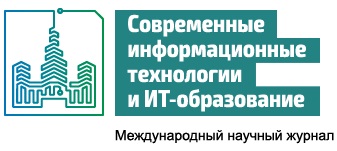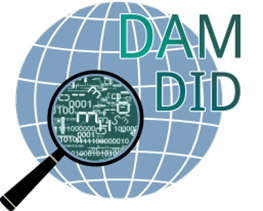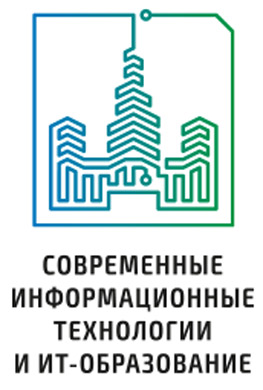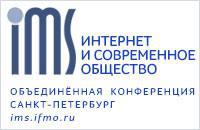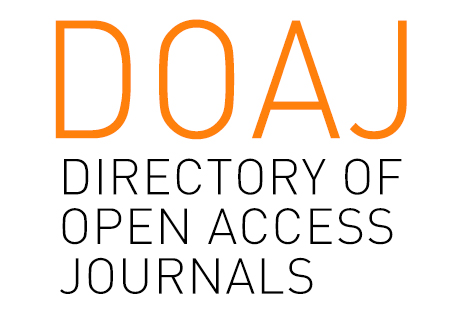Количественные характеристики безопасности программ
Аннотация
Качество программ принято характеризовать числом ошибок на 1000 строк кода. Эта характеристика получается в результате регрессионного анализа числа выявленных ошибок в последовательных версиях кода с последующей экстраполяцией в отдаленное будущее. Данная процедура является очень трудоемкой даже для крупных компаний. Проверить достоверность такой оценки для обычных пользователей как правило довольно сложно. Такая проблема возникает из-за недоступности исходных данных. Существуют различные способы оценки числа ошибок в программе, например, модель Шумана, Муса, Ла Падула, Джелинского ‒ Моранды, Шика ‒ Волвертона, модель переходных вероятностей, статистическая модель Миллса, простая интуитивная модель, модель Липова, Коркорэна, Бернулли, Нельсона и т.д.. Часто приходится иметь дело с программами, в которых формально нет ошибок, при этом их качество на первый взгляд не очевидно.
В данной статье предложен новый метод количественной оценки качества программ, написанных на языке Perl. Данный метод позволяет выявить места в программах, где могут быть допущены ошибки. В отличие от существующих алгоритмов данный метод позволяет оценивать качество программы, анализируя стиль написания ее кода. Предлагаемый метод оценки качества применим к любым программам, написанным на алгоритмических языках высокого уровня с открытыми кодами (Python, Perl, PHP и т. д.). В том числе его можно использовать для сравнения качества и выбора программ, решающих одну и ту же задачу.
Литература
2. Zhang Z., Wu W., Wu D. A Multi-Mode Learning Behavior Real-time Data Acquisition Method Based on Data Quality. In: 2021 2nd International Symposium on Computer Engineering and Intelligent Communications (ISCEIC). Nanjing, China: IEEE Computer Society; 2021. p. 64-69. doi: https://doi.org/10.1109/ISCEIC53685.2021.00021
3. Wang Y., Yu C., Hou J., Zhang Y., Fang X., Wu S. Research on the Key Issues of Big Data Quality Management, Evaluation, and Testing for Automotive Application Scenarios. Complexity. 2021;2021:9996011. doi: https://doi.org/10.1155/2021/9996011
4. Pipino L.L., Lee Y.W., Wang R.Y. Data quality assessment. Communications of the ACM. 2002;45(4):211-218. doi: https://doi.org/10.1145/505248.506010
5. Govender S.G., Kritzinger E., Loock M. A Framework for the Assessment of Information Security Risk, the Reduction of Information Security Cost and the Sustainability of Information Security Culture. In: Silhavy R. (ed.) Applied Informatics and Cybernetics in Intelligent Systems. CSOC 2020. Advances in Intelligent Systems and Computing. Vol. 1226. Cham: Springer; 2020. p. 69-84. doi: https://doi.org/10.1007/978-3-030-51974-2_7
6. Aiken P.H. Reverse Engineering of Data. IBM Systems Journal. 1998;37(2):246-269. doi: https://doi.org/10.1147/sj.372.0246
7. Arenas M., Bertossi L., Chomicki J. Consistent query answers in inconsistent databases. In: Proceedings of the eighteenth ACM SIGMOD-SIGACT-SIGART symposium on Principles of database systems (PODS '99). New York, NY, USA: Association for Computing Machinery; 1999. p. 68-79. doi: https://doi.org/10.1145/303976.303983
8. Сarlo B., Cinzia C., Chiara F., Andrea M. Methodologies for data quality assessment and improvement. ACM Computing Surveys. 2009;41(3):16. doi: https://doi.org/10.1145/1541880.1541883
9. Ballou D.P., Wang R., Pazer H.L., Tayi G.K. Modelling Information Manufacturing Systems to Determine Information Product Quality. Management Science. 1998;44(4):433-594. doi: https://doi.org/10.1287/mnsc.44.4.462
10. Bovee M., Srivastava R.P., Mak B. A Conceptual Framework and Belief- Function Approach to Assessing Overall Information Quality. International Journal of Intelligent Systems. 2003;18(1):51-74. doi: https://doi.org/10.1002/int.10074
11. Cappiello C., Francalanci C., Pernici B. Time-Related Factors of Data Quality in Multichannel Information Systems. Journal of Management Information Systems. 2003;20(3):71-91. doi: https://doi.org/10.1080/07421222.2003.11045769
12. Eppler M.J. Managing Information Quality. Increasing the Value of Information in Knowledge-intensive Products and Processes. Heidelberg: Springer Berlin; 2003. 398 p. doi: https://doi.org/10.1007/3-540-32225-6
13. Jarke M., Jeusfeld M.A., Quix C., Vassiliadis P. Architecture and Quality in Data Warehouses: An Extended repository Approach. Information Systems. 1999;24(3):229-253. doi: https://doi.org/10.1016/S0306-4379(99)00017-4
14. Naumann F. Quality-Driven Query Answering for Integrated Information Systems. In: Lecture Notes in Computer Science. Vol. 2261. Heidelberg: Springer Berlin; 2002. 168 p. doi: https://doi.org/10.1007/3-540-45921-9
15. Orr K. Data Quality and Systems Theory. Communications of the ACM. 1998;41(2):66-71. doi: https://doi.org/10.1145/269012.269023
16. Wang R.Y. A Product Perspective on Total Data Quality Management. Communications of the ACM. 1998;41(2):58-65. doi: https://doi.org/10.1145/269012.269022
17. Wang R.Y., Strong D.M. Beyond Accuracy: What Data Quality Means to Data Consumers. Journal of Management Information Systems. 1996;12(4):5-33. doi: https://doi.org/10.1080/07421222.1996.11518099
18. Wand Y., Wang R.Y. Anchoring Data Quality Dimensions in Ontological Foundations. Communication of the ACM. 1996;39(11):86-95. doi: https://doi.org/10.1145/240455.240479
19. Coust P. Chapter 15 ‒ Methods and Logics for Proving Programs. Formal Models and Semantics. Handbook of Theoretical Computer Science. Elsevier Science; 1990. p. 843-993. doi: https://doi.org/10.1016/B978-0-444-88074-1.50020-2
20. Dorenskaya E.A., Semenov Yu.A. About the Programming Techniques, Oriented to Minimize Errors. Modern Information Technologies and IT-Education. 2017;13(2):50-56. (In Russ., abstract in Eng.) doi: https://doi.org/10.25559/SITITO.2017.2.226
21. Holzmann G.J. The power of 10: rules for developing safety-critical code. Computer. 2006;39(6):95-99. doi: https://doi.org/10.1109/MC.2006.212
22. Schilling W., Alam M. A methodology for quantitative evaluation of software reliability using static analysis. In: 2008 Annual Reliability and Maintainability Symposium. Las Vegas, NV, USA: IEEE Computer Society; 2008. p. 399-404. doi: https://doi.org/10.1109/RAMS.2008.4925829
23. de Sousa A.L.R., de Souza C.R.B., Reis R.Q. A 20-year mapping of Bayesian belief networks in software project management. IET Software. 2022;16(1):14-28. doi: https://doi.org/10.1049/sfw2.12043
24. Sonnekalb T., Heinze T.S., Mäder P. Deep security analysis of program code. Empirical Software Engineering. 2022;27(1):2. doi: https://doi.org/10.1007/s10664-021-10029-x
25. Villalón-Fonseca R. The nature of security: A conceptual framework for integral-comprehensive modeling of IT security and cybersecurity. Computers & Security. 2022;120:102805. doi: https://doi.org/10.1016/j.cose.2022.102805

Это произведение доступно по лицензии Creative Commons «Attribution» («Атрибуция») 4.0 Всемирная.
Редакционная политика журнала основывается на традиционных этических принципах российской научной периодики и строится с учетом этических норм работы редакторов и издателей, закрепленных в Кодексе поведения и руководящих принципах наилучшей практики для редактора журнала (Code of Conduct and Best Practice Guidelines for Journal Editors) и Кодексе поведения для издателя журнала (Code of Conduct for Journal Publishers), разработанных Комитетом по публикационной этике - Committee on Publication Ethics (COPE). В процессе издательской деятельности редколлегия журнала руководствуется международными правилами охраны авторского права, нормами действующего законодательства РФ, международными издательскими стандартами и обязательной ссылке на первоисточник.
Журнал позволяет авторам сохранять авторское право без ограничений. Журнал позволяет авторам сохранить права на публикацию без ограничений.
Издательская политика в области авторского права и архивирования определяются «зеленым цветом» в базе данных SHERPA/RoMEO.
Все статьи распространяются на условиях лицензии Creative Commons «Attribution» («Атрибуция») 4.0 Всемирная, которая позволяет другим использовать, распространять, дополнять эту работу с обязательной ссылкой на оригинальную работу и публикацию в этом журналe.
